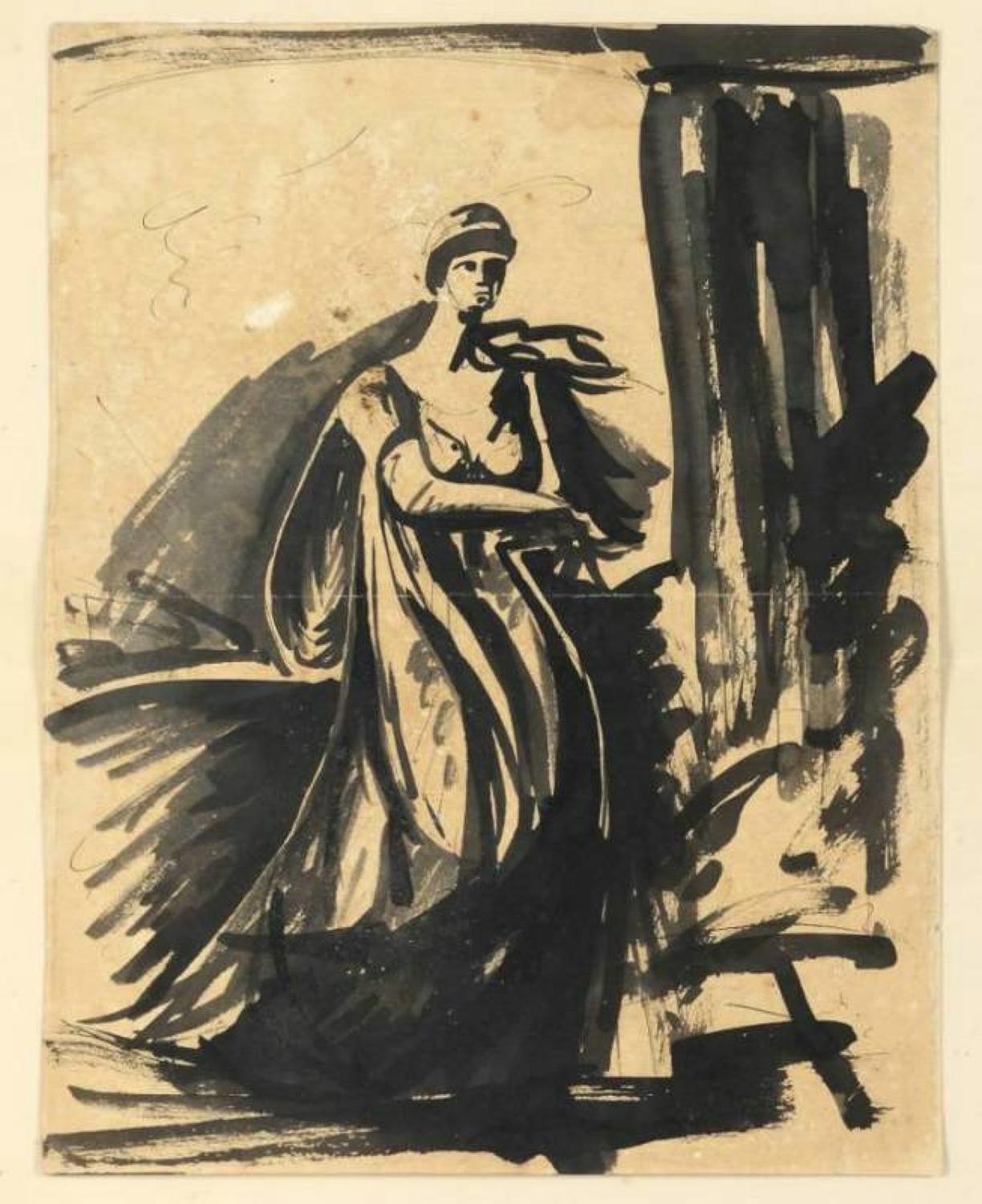
Code: 10004
Dimensions:
GEORGE ROMNEY Dalton-in-Furness 1734 – 1802 Kendal, Cumbria
Study of A Woman.
Drawing in brush and black ink. An old inscription verso, “Lady Hamilton/ by Geo Romney.”
An extremely successful portrait painter after Joshua Reynolds and Thomas Gainsborough, Romney is considered to be the finest society portraitist of the 18th century. By 1762 he had moved to London where he painted portraits and historical subjects. He quickly assimilated Reynolds grand manner and by the early 1770s he had a considerable practice in London. By 1773, however, he decided to travel to Italy to acquaint himself with earlier Italian masters and the thriving art scene in Rome where a number of artists from England – among them Thomas Banks, Joseph Wright of Derby, Nathaniel Marchant, and John Browne – came in contact with the artists Henry Fuseli, Nicolai Abilgaard and Tobias Sergel. This so-called Fuseli circle in Rome was enormously influential in the subsequent careers of many English artists, among them Romney. This sheet, in particular, shows a favored style of the artist, executed with a brush or very broad pen in a rapid, almost slashing technique.
The art that resulted from this group created what may be called a Romantic Neoclassicism. It drew subjects from Antiquity, but depicted them with an often-powerful sensuousness and emotional directness not found in French Neoclassicism. The activities of the artists of the Fuseli circle had a most profound effect on English painting and drawing from the later 18th century through the first two decades of the 19th century.
Our drawing clearly shows Romney s participation in the interests of the Fuseli circle; it may be compared to the Orpheus and Eurydice, private collection England, [1] and to The Lapland Witches Raising a Storm, Fitzwilliam Museum, Cambridge.[2]
On his return to London in 1775, Romney s career resumed its upward trajectory; he was enormously successful as a society portraitist, but maintained an interest in myth and history painting until his death in 1802 after a long physical decline.
253 x 198 mm 10 x 7 15/16 inches